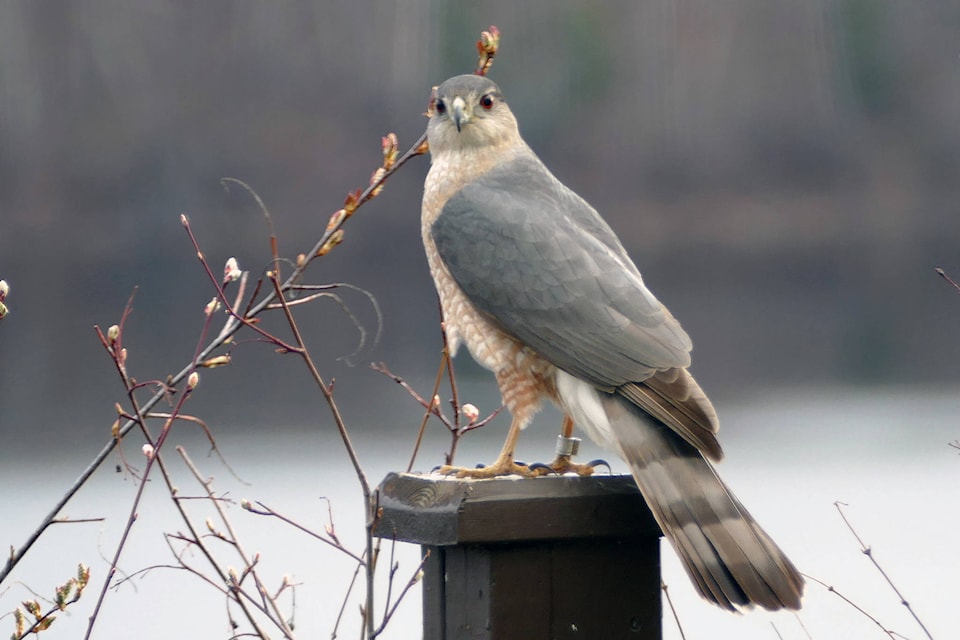Last week when we spotted a hawk and noticed a band on its leg, we decided to explore a little on this curious banded bird. Here’s what Lakes District News found out about bird banding and what to do when you spot a bird band.
The first step was to get the bird identified correctly.
Guy L. Monty, a wildlife consultant who specializes in birds, confirmed that based upon the tail feathers of uneven length, the bird was an adult Cooper’s Hawk.
“This is probably a male, because of it’s size. Females in this species are about one third larger than males,” he said.
Monty also said that it looked like the bird was banded at some point but without knowing the band code, it was hard to say where it was banded and one had to be fairly close to read a band.
“This species is migratory in the central interior, so it could have been banded anywhere between your location and central Mexico,” he said, adding that typically the band numbers are only recorded again if a bird dies and someone finds it unless trapped again by other banders.
The second step was to report the banded bird to the U.S. Geological Survey’s (USGS) North American Bird Banding Program. Details on what the different types of bird bands and markings are could be found on the USGS’s website.
According to Kyra Harvey, a bird banding lab staff member of the USGS, bird banding is important for studying the movement, survival and behavior of birds. About 60 million birds representing hundreds of species have been banded in North America since 1904. About four million bands have been recovered and reported.
Reporting such bird bands then becomes crucial especially if people are to find broken, fallen-off bird bands or dead birds with bands on them. While avid birders would know the exact procedure to follow when they spot a bird band or a banded bird, not everyone would be aware as to why it is important to keep track of.
“Data from banded birds are used in monitoring populations, restoring endangered species (thankfully the Cooper Hawk is not endangered), studying effects of environmental contaminants, and addressing such issues as Avian Influenza, bird hazards at airports, and crop depredations. Results from banding studies support national and international bird conservation programs such as Partners in Flight,” added Harvey.
If community members are to find a bird band or a banded bird, they are encouraged to immediately report it to USGS online or call toll-free 1-800-327-BAND (2263) to leave a message.
